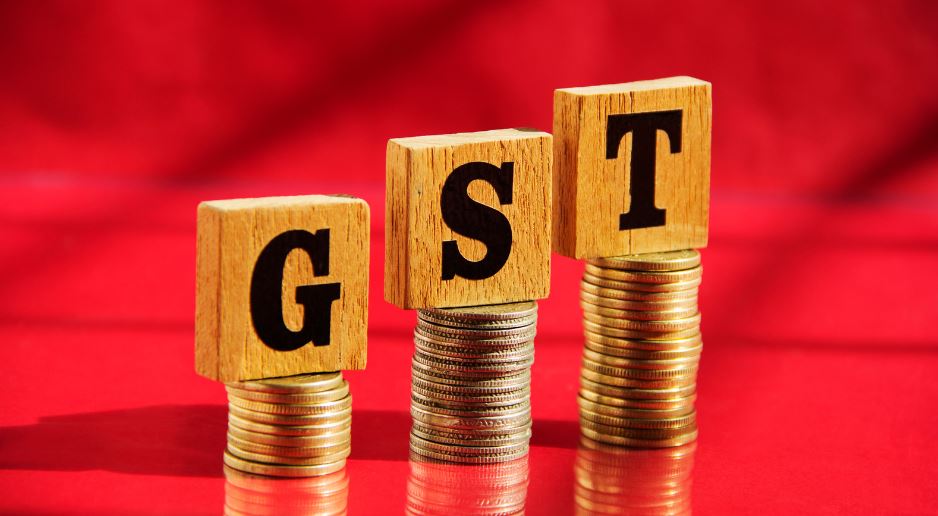Navigating the world of taxes can be daunting, but understanding how to calculate GST in India doesn’t have to be a headache! Whether you’re a business owner or just curious about tax laws, this guide will break down the process step by step. Get ready to demystify GST and master the art of accurate calculations for smoother financial operations. Let’s dive in!
What is GST?

GST, or Goods and Services Tax, is a unified tax system implemented in India to streamline the indirect taxation structure. It replaced multiple cascading taxes like VAT, service tax, and excise duty with a single comprehensive tax. This revolutionary reform aims to create a common market across states by eliminating barriers to interstate trade.
Under the GST regime, both goods and services are taxed at different rates based on their classification. There are four main GST slabs – 5%, 12%, 18%, and 28% – along with specific rates for certain items like luxury goods and sin products. Additionally, there are various exemptions and special categories under GST to accommodate different sectors of the economy.
One of the key features of GST is its input tax credit mechanism that allows businesses to claim credits for taxes paid on inputs used in production or providing services. This helps prevent double taxation and promotes transparency in the taxation system.
Understanding the Different Types of GST in India
GST in India is not a one-size-fits-all tax. It comes in different forms tailored to various types of transactions and goods/services. The most common are CGST (Central Goods and Services Tax), SGST (State Goods and Services Tax), IGST (Integrated Goods and Services Tax), and UTGST (Union Territory Goods and Services Tax). Each type has its own specific purpose, whether it’s for intra-state transactions, inter-state sales, or transactions within union territories.
CGST is levied by the central government on intra-state supplies of goods and services, while SGST is imposed by state governments on the same transactions. IGST applies to inter-state supplies as it combines both CGST and SGST. UTGST, on the other hand, pertains to goods/services supplied within Union Territories.
How to Calculate GST in India?

GST, or Goods and Services Tax, is a significant indirect tax reform introduced in India. Understanding how to calculate GST correctly is crucial for businesses to comply with tax regulations. To calculate GST in India, you first need to determine the taxable value of the goods or services being sold. This includes the transaction amount minus any discounts or taxes.
Once you have the taxable value, the next step is to apply the appropriate GST rate based on the type of goods or services. In India, there are different GST rates ranging from 5% to 28%, depending on the category of products.
After determining the taxable value and applicable GST rate, calculating the final GST amount is straightforward. Multiply the taxable value by the GST rate divided by 100 to get the total GST payable on a transaction.
Accurate calculation of GST ensures transparency in business transactions and helps avoid penalties for underpayment or miscalculation. By following these steps diligently, businesses can streamline their tax compliance processes and contribute towards building a robust economy.
A. Determine the Taxable Value
When calculating GST in India, the first step is to determine the taxable value. This value is crucial as it forms the basis for applying the GST rate. The taxable value includes not just the selling price of goods or services but also any other charges, like packing, commission, etc., that are part of the sale.
To calculate the taxable value accurately, you need to ensure all components contributing to the transaction’s value are taken into account. For example, if you’re selling a product, consider factors such as discounts offered or additional costs involved in delivering it to your customer.
By correctly determining the taxable value upfront, you lay a solid foundation for accurate GST calculation later on. It helps prevent errors and ensures compliance with India’s tax regulations. So, take time to assess all elements influencing your transaction’s worth before moving forward with GST calculations.
B. Calculate the Applicable GST Rate
When it comes to calculating the applicable GST rate in India, it’s essential to know that there are different tax slabs for various goods and services. The GST rates are categorized into five main brackets: 0%, 5%, 12%, 18%, and 28%. Each category has specific items assigned to it based on their nature.
To determine which GST rate applies to your product or service, you need to first identify the correct HSN (Harmonized System of Nomenclature) code. The HSN code helps in classifying goods under the appropriate tax slab. Once you have the HSN code, cross-reference it with the GST rate schedule provided by the government.
It’s crucial to stay updated on any changes in GST rates announced by the authorities. Incorrectly applying a lower or higher tax rate can lead to penalties and legal consequences. Therefore, double-checking the current rates is key for accurate calculations when determining the applicable GST rate for your transactions.
C. Calculate the Final GST Amount
Once you have determined the taxable value and calculated the applicable GST rate, the next step is to calculate the final GST amount. This is where all your calculations come together to give you the total tax liability.
To calculate the final GST amount, simply multiply the taxable value by the applicable GST rate. For example, if the taxable value is Rs. 10,000 and the GST rate is 18%, then the final GST amount would be Rs. 1,800 (Rs. 10,000 x 18/100).
It’s important to double-check your calculations to ensure accuracy in determining how much GST needs to be paid or collected on a particular transaction. Mistakes in calculating this final amount can lead to compliance issues and potential penalties from tax authorities.
By following these steps diligently and accurately calculating the final GST amount, you can ensure that your business remains compliant with Indian tax laws while also managing your finances effectively.
Importance of Accurate GST Calculation
Accurate GST calculation is crucial for businesses to ensure compliance with the tax regulations in India. Properly calculating GST helps avoid penalties and legal issues that may arise from incorrect filings.
Moreover, precise calculations enable businesses to determine the correct amount of tax liability owed to the government. This ensures transparency in financial transactions and builds trust with authorities.
Accurate GST calculation also plays a significant role in maintaining smooth operations within a company. By knowing exactly how much GST needs to be paid or collected, businesses can effectively manage their cash flow and budget accordingly.
Additionally, precise calculations help prevent any discrepancies or errors that could lead to audits or investigations by tax authorities. It ultimately saves time and resources that would otherwise be spent on rectifying mistakes.
In essence, accurate GST calculation is not just about fulfilling legal obligations; it is a fundamental aspect of running a successful and compliant business in India.
Common Mistakes to Avoid When Calculating GST

When calculating GST in India, businesses should avoid some common mistakes to ensure accurate tax compliance. One prevalent error is miscalculating the taxable value by including non-taxable items or incorrectly assessing discounts and deductions. It’s crucial to accurately determine what constitutes the taxable amount before applying the GST rate.
Another mistake is applying the wrong GST rate due to misunderstanding the classification of goods and services under different tax slabs. Each category has a specific rate, and misinterpreting these classifications can lead to incorrect calculations. Additionally, overlooking input tax credits can result in overpayment of GST, impacting your bottom line.
Failure to account for reverse charges on certain transactions can also lead to inaccuracies in your GST calculations. Remembering to include these charges when applicable is essential for precise tax computations. Not keeping proper documentation and records of transactions can make it challenging to rectify any errors or discrepancies that may arise during audits or assessments.
By avoiding these common pitfalls and staying informed about changes in GST regulations, businesses can ensure accurate calculations and timely compliance with tax laws.
Conclusion
Understanding how to calculate GST in India is essential for businesses to comply with tax regulations and avoid any penalties or fines. By following the steps outlined in this article – determining the taxable value, calculating the applicable GST rate, and finding the final GST amount – businesses can ensure accurate tax calculations.
Accurate GST calculation not only helps in proper compliance but also enables businesses to manage their finances effectively. It provides clarity on pricing strategies, profit margins, and overall financial health. Avoiding common mistakes in GST calculation will further streamline business operations and prevent any discrepancies.
By staying informed about the different types of GST in India and mastering the art of calculating it correctly, businesses can navigate the complex tax landscape with confidence. Remember that precision is key when it comes to dealing with taxes. So, arm yourself with the knowledge and resources to calculate GST accurately and propel your business towards success!
FAQ – How to Calculate GST in India?
What is the formula to calculate GST in India?
To calculate GST in India, you can use the formula: GST Amount = (Original Cost x GST Rate) / 100.
How do I determine the applicable GST rate for my goods or services?
The applicable GST rate for goods or services in India varies based on their category. You can refer to the GST Council’s official website for updated rates.
Are there different GST rates for different categories of goods and services in India?
Yes, India has multiple GST rates ranging from 0% to 28% for various categories of goods and services.
How can I ensure that I am using the correct GST rate for accurate calculations?
You can verify the correct GST rate by referring to the GST council’s official notifications or consulting with a tax professional.

